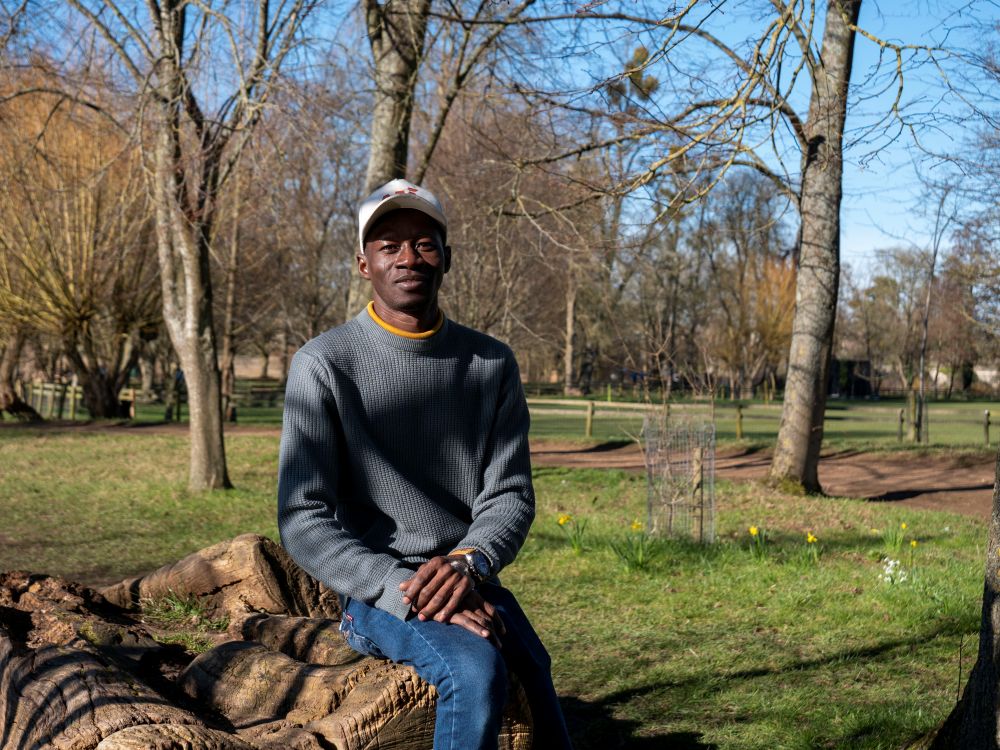Ecologist explores using artificial intelligence to monitor nature recovery
The degradation of natural landscapes due to human activities and environmental changes is cause for global concern

The landscape in Kwahu region of eastern Ghana today is best described as a mosaic of forest patches interspersed within a savanna and shrubland. However, recent investigations by researchers at the University of Oxford revealed that the region was actually once covered by different types of forest. These forests made it highly suitable for agroforestry, particularly cocoa, coffee and cola cultivation.
Several factors contributed to the environmental degradation of the Kwahu landscape. Among the attributable causes, says Bawa Suleman, a doctoral ecologist at Oriel College, was the construction of a hydroelectric dam on the River Volta in the early 1960s. “Residents who lived through this period recall being forewarned about the potential consequences of the dam on the hydrology of the area and its cascading effects on tree cover and tree crop cultivation,” Suleman explains, “with predicted repercussions lasting at least 50 years.” The construction of the hydroelectric dam led to extensive upstream flooding and the creation of Lake Volta, the world’s third-largest manmade lake.
These hydrological alterations, combined with illegal logging activities, significantly disrupted local climatic conditions. The resulting environmental changes contributed to an upsurge in grazing activities and wildfires, exacerbating deforestation and habitat degradation. In response to these circumstances, AJA Climate Solutions, a Singapore-based company, is undertaking an ambitious nature recovery project in Kwahu. The project aims not only to restore deforested cocoa lands through cocoa, coffee and plantain agroforestry but to rehabilitate degraded forest reserves and also to rewild an off-reserve area.
Suleman’s doctoral research, which explores the use of artificial intelligence (AI) and machine learning to support a scalable, evidence-based approach to monitoring nature recovery, is integral to the project. Suleman is deploying a network of audio recording devices across Kwahu. He will then use a sophisticated AI model to process the collected acoustic data and measure biodiversity trends and ecological function across time. He says that the information will be useful for informing the approach to nature recovery in the region.
While supervised AI models have been developed before to identify species in audio recordings, these require large labelled training data sets, which can be a limitation. Suleman is therefore exploring emerging “unsupervised” models that can function effectively with only “minimal labelled data” for his research. An unsupervised model, he explains, will be more scalable, since it will not need as much labelled training data in order to identify species with a sufficient degree of precision. Moreover, nor will it require very large amounts of new labelled data to be able to be repurposed for different natural environments, which are inhabited by different species.
Suleman’s research will also analyse the acoustic data to look at ecological functional structure and ecosystem energetics. Multiple species can occupy the same functional role within an ecosystem, whereas a resilient ecosystem involves many different species in distinct ecological roles. Therefore it should be possible to develop a more accurate picture of whether or not the nature recovery program is actually creating a more resilient ecosystem by looking at functional structure and energy flow across taxa, as opposed to the number of different species alone.
The final strand of Suleman’s research will incorporate high-resolution LiDAR technology and spectral imagery into the earlier analyses of acoustic data to model species occupancy and distribution, which will in turn enable him to make predictions regarding the effectiveness of different possible interventions for restoring the Kwahu landscape. The findings of this research will not only inform conservation strategies in Ghana, Suleman claims, but “contribute valuable insights to the broader field of ecological restoration and AI-driven biodiversity monitoring”.
Yet several challenges must be addressed first — for example, developing the AI model to process the mass of data but also solving other logistical problems. Suleman estimates that no fewer than 60 audio recording devices will be required to record a sufficient amount of data for his study. That many devices, recording on a continuous cycle for two years, will capture more than 520,000 hours of audio data per year.
Suleman’s research is being supervised by Professor Yadvinder Malhi, a Senior Research Fellow at Oriel College and the Director of the Leverhulme Centre for Nature Recovery at the University of Oxford, and Dr Ella Browning. Sulemana is a recipient of a postgraduate scholarship at Oriel College, awarded to outstanding students from sub-Saharan Africa. He is working in partnership with AI technicians at the Leverhulme Centre for Nature Recovery to integrate AI with ecological restoration and offer a scalable, data-driven approach to monitoring degraded natural landscapes.